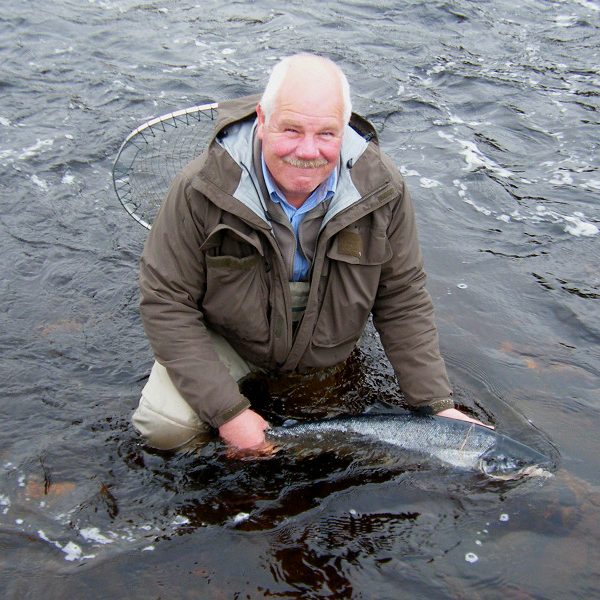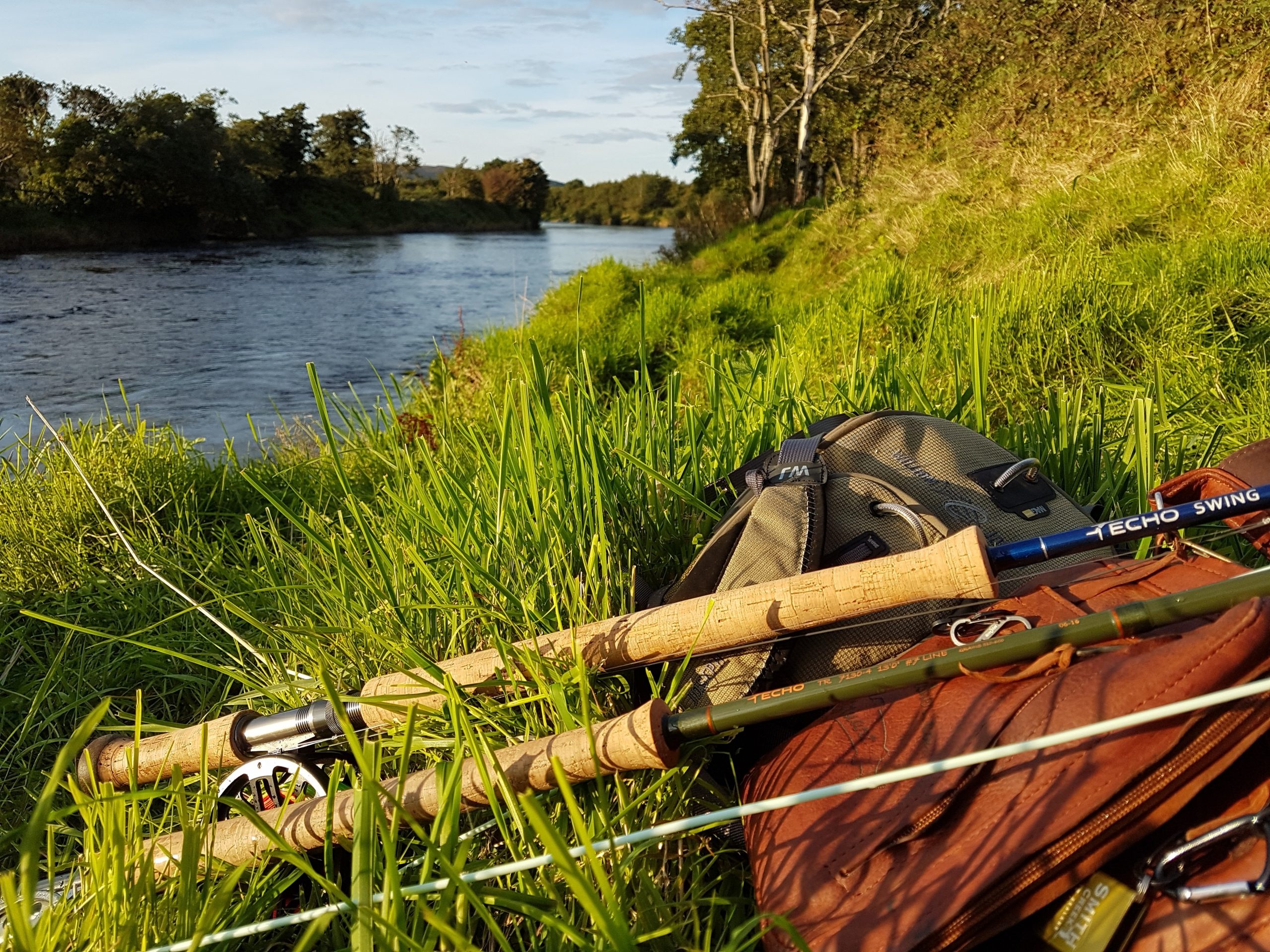Blog

PADDY MCDONNELL
BalticFlyFisher Ambassador / professional Flycaster and Guide based in Ireland

We need to ensure that the head/belly length of our new fly line will match the length of our fly rod, especially if we want to Spey cast. A good guide/calculation would be to multiply the length of our rod by 2.5 to find the lower end of the rod + line marriage scale or multiply by 4.5 to determine the upper limits of the same rod + line marriage scale. Below are some examples.
11ft rod x 2.5 = 27/28ft – This a good choice of head/belly length of a fly line for an 11ft rod.
11ft rod x 4.5 = 49ft/50ft – This is close to the upper limits of what would suit an 11ft rod.
15ft rod x 2.5 = 37/40ft – This is a good choice of head/belly length of a fly line for a 15ft rod.
15ft rod x 4.5 = 67ft/70ft – This is close to the upper limits of what would suit a 15ft rod
Beginners and improvers will find that head/belly lengths at the lower end of this scale are easier to control initially and as they build their confidence and experience they can then eventually progress to lines at the upper end of this rod + line marriage scale. Remember, with any rod it is easier to cast a line with a shorter head than a line with a long head especially if this head exceeds 4.5 times the length of your rod. Shorter is easier and believe me when you are wading deep in a strong current, or uptight to the bank with very little room to cast, easier is very welcome!
We also need to honestly assess our fly casting ability and overall experience when deciding which line to buy. Lines with short heads are the easiest to control and cast. Lines with medium length heads demand a little more developed technique to work well. Lines with long heads suit the advanced intermediate or experienced fly fisher and are not at all suitable for beginners. Beginners buying lines with heads that are too long for their rods is a mistake that I often see. Lines with long heads can be very unforgiving beasts, and it takes a considerable amount of practice to be able to cast them efficiently. Let’s now try and pull all these factors together into some suggested solutions to support various individual needs.
I only fish for salmon a few days every year? I don’t want to spend much time on learning technique but I really love being in the river fishing and enjoying the countryside? I have a lot of work and family commitments and no spare leisure time to practise improving my casting technique? A line with a short or extra short head would be a good choice for these fly fishers because these lines will be easier to manage which will allow them to cast their flies out to a reasonable distance, and be in with a good chance of a fish.
I am an older fly fisher and suffer from arthritis? I am a young teenager? These unavoidable minor or major physical restrictions are greatly alleviated by using lines with short or extra short heads. Short head lines are just physically easier to cast and over the course of a long day’s fishing they help to considerably reduce the strain on our bodies.
I am a beginner and I want to learn good fly casting technique so that I can effectively fish my local small salmon river? I am a beginner and I want to learn good fly casting technique so that I can effectively fish on my local big salmon river?
Both of these fly fishers should start learning how to cast with short head/belly lines. Short belly lines are the most forgiving when we make mistakes in our technique and also the most forgiving if we happen to be slightly off in the tempo and timing of our casts as we go through the learning process. Learning to cast with short belly lines helps to avoid frustration and quickly builds confidence.
After some practice sessions with a short belly line, our beginner who wants to fish on his/her local small river will be able to start their journey to becoming an efficient salmon angler. The beginner who will be fishing primarily on a big river will have to undergo further development in technique after having first learned to cast with short heads. If he or she wishes to achieve their full potential on big rivers, they will have to practice and become comfortable casting medium belly/head length lines. Once they have achieved a good level of competency with medium length heads they can then progress to practising with long heads.
This whole process takes time and a lot of practice but it is well worth the effort because the fly fisher will have no restrictions in the fly casting department, and this will greatly add to overall efficiency and effectiveness on big salmon rivers.
I started fishing in the late 1960’s, early 70’s, with cane rods and old greased lines. I have closely observed all the developments and innovations in fly lines over the last forty years and now we are spoilt for choice when buying a new line. We now have such a bewildering array of lines to choose from that this in itself can be very confusing for the beginner. We have looked at some of the main factors to consider and finally I will outline which fly lines I personally use to assist my clients maximise their efficiency, opportunities, and enjoyment.
I guide, and teach fly casting on mostly small or medium sized rivers and on the big loughs in the West of Ireland. By far the most important tool in my armoury is the Commando line manufactured by OPST. The Commando’s extra short head is exceptionally versatile and can be easily cast overhead, spey cast, and skagit cast. It is the line that I use most on small and medium sized salmon, trout, and pike rivers, and also on the loughs for salmon, trout and pike. It is a line that can easily accommodate the fastest of sinking tips and heavy or air resistant flies of all shapes and sizes. It is one of the best lines that I know for teaching beginners fly casting technique. I can also recommend the Rage line manufactured by Airflo.
The In Touch Mid Head Spey lines manufactured by Rio are well balanced and a good choice for fishing on medium or big salmon rivers. Spey lines with long heads/bellies can be more difficult to design and balance correctly so that they are user friendly. I can recommend the long belly lines manufactured by Gaelforce, and the intermediate level caster wanting to progress to casting long heads can be assured these lines have been designed by some of the very best long distance Spey casters in the world.
Matching our new fly line to our personal approach to fishing, to the size of river we will be fishing on, to the size of the flies and rod length that we will using, to our casting ability, will go a very long way to ensuring that we have a productive and enjoyable fishing experience.
All the best and tight lines,
Paddy

